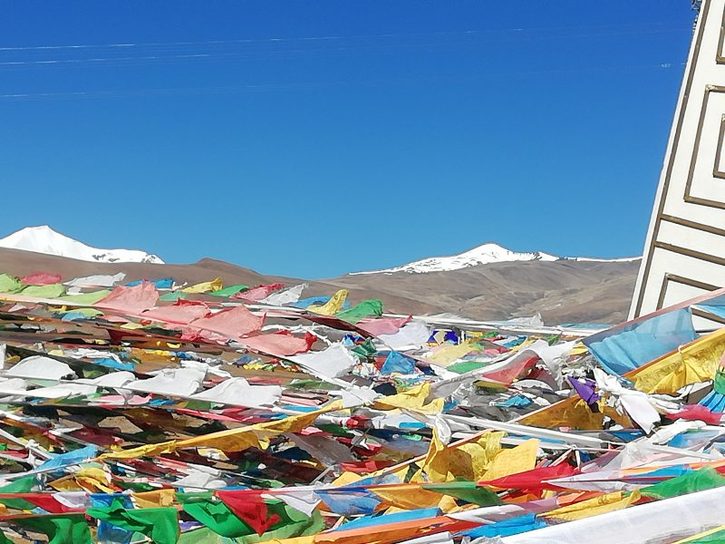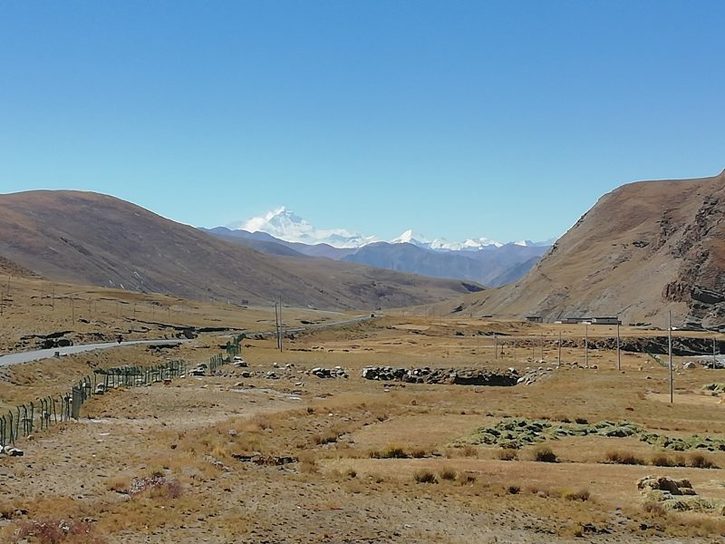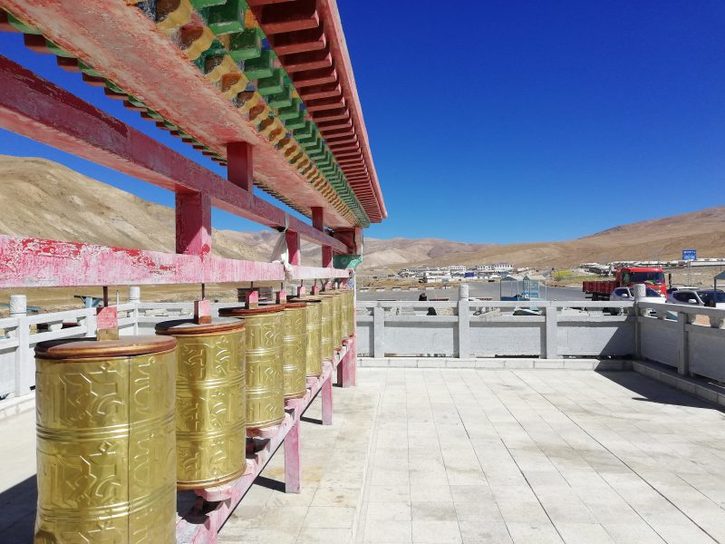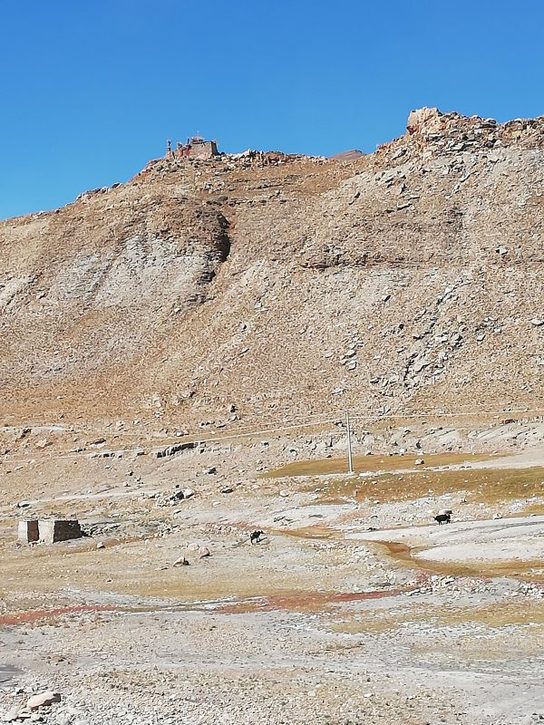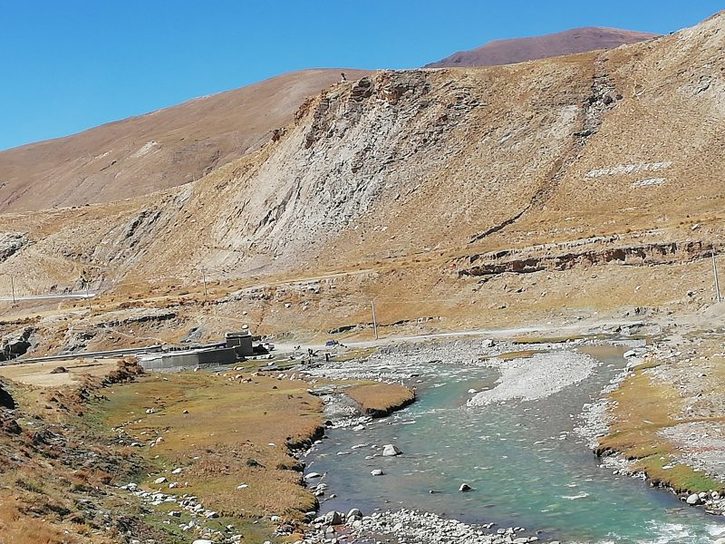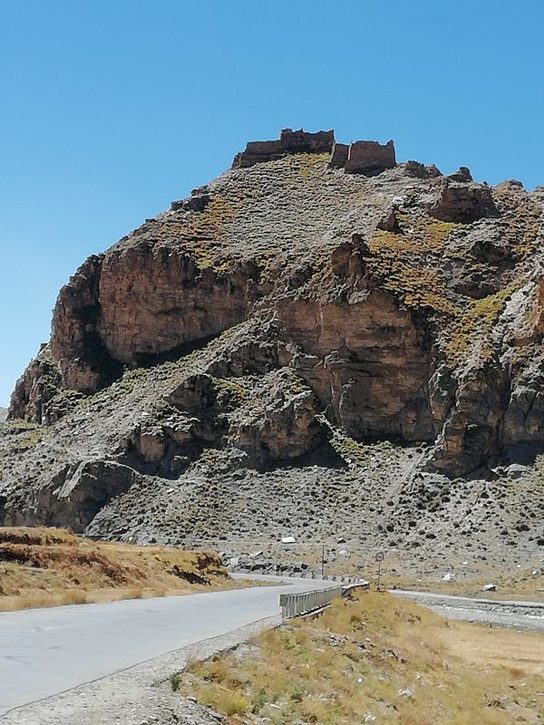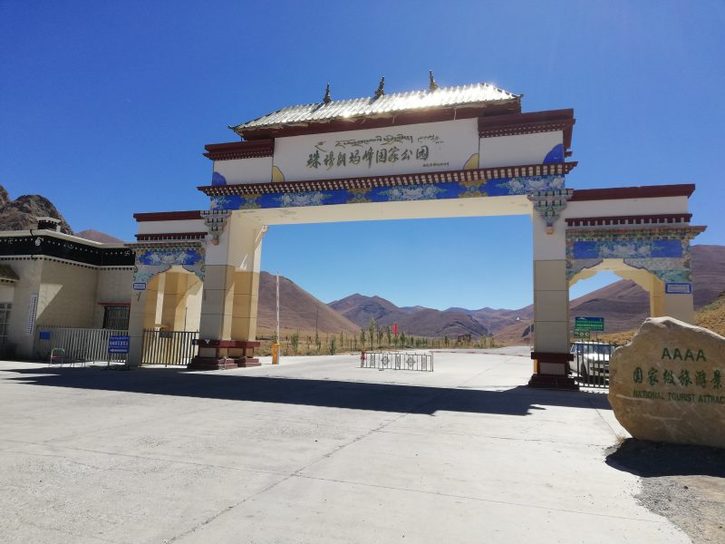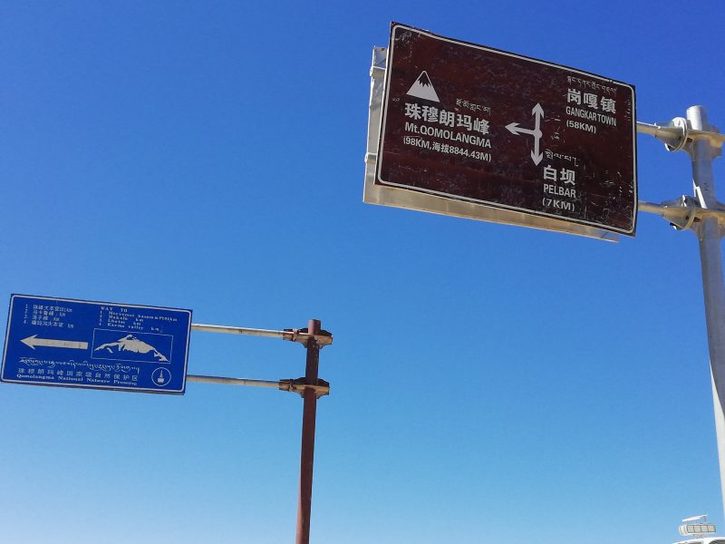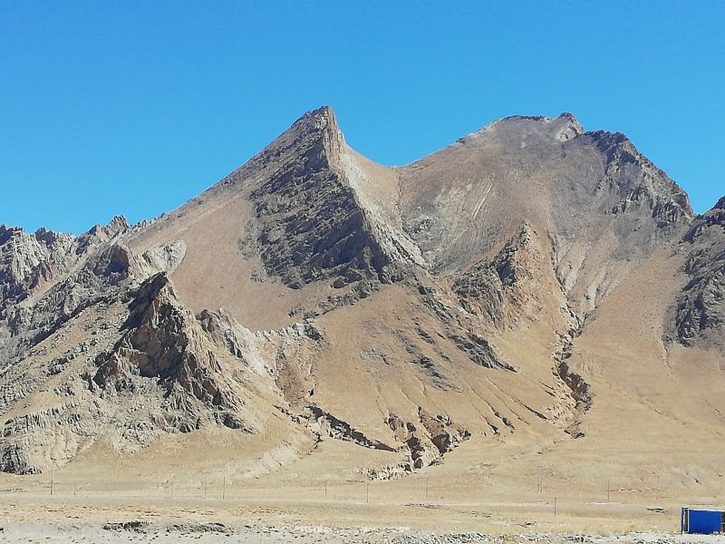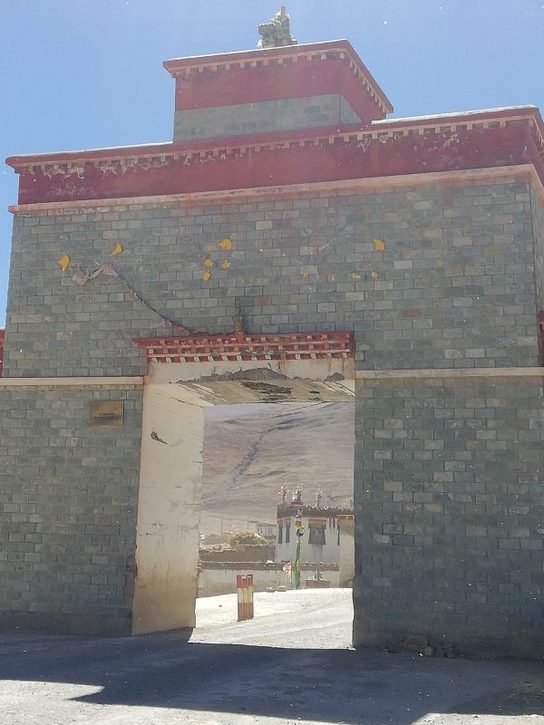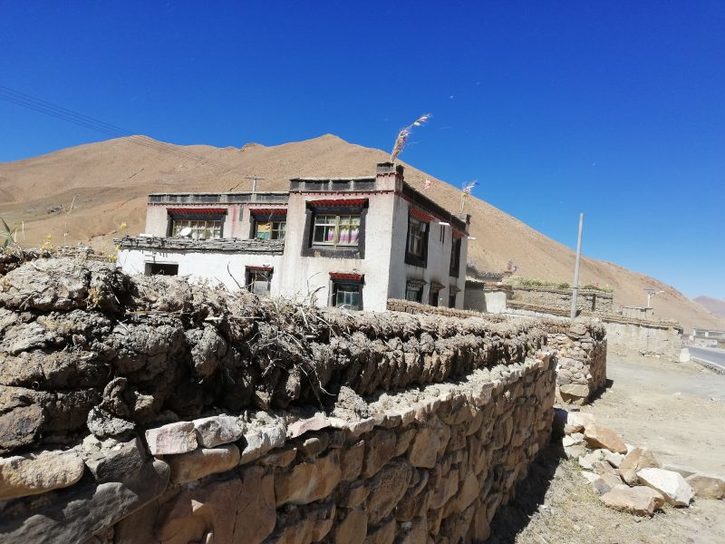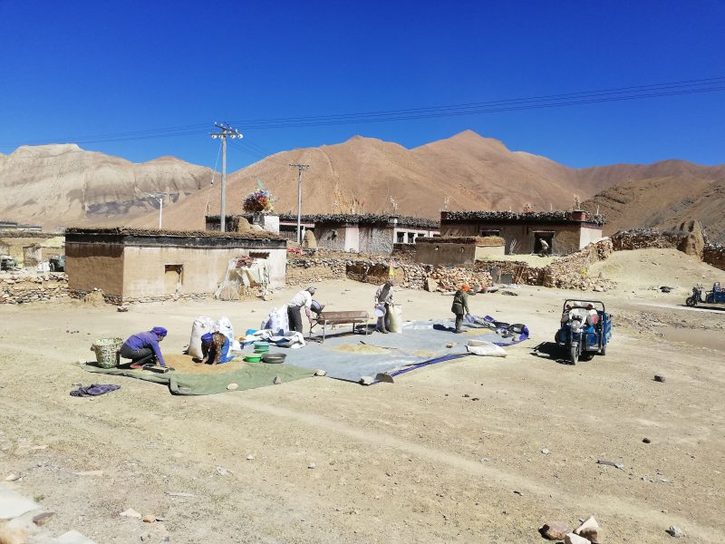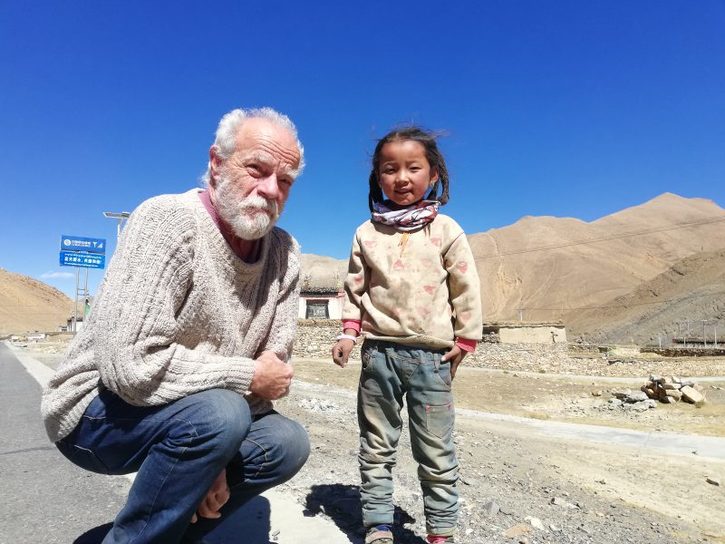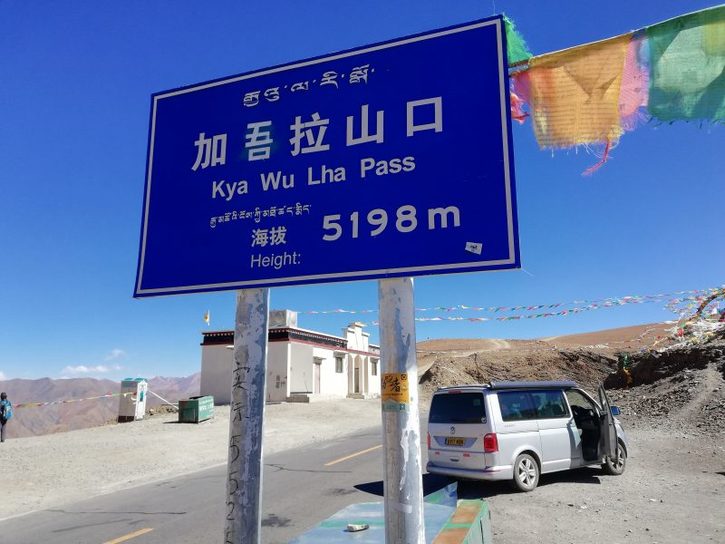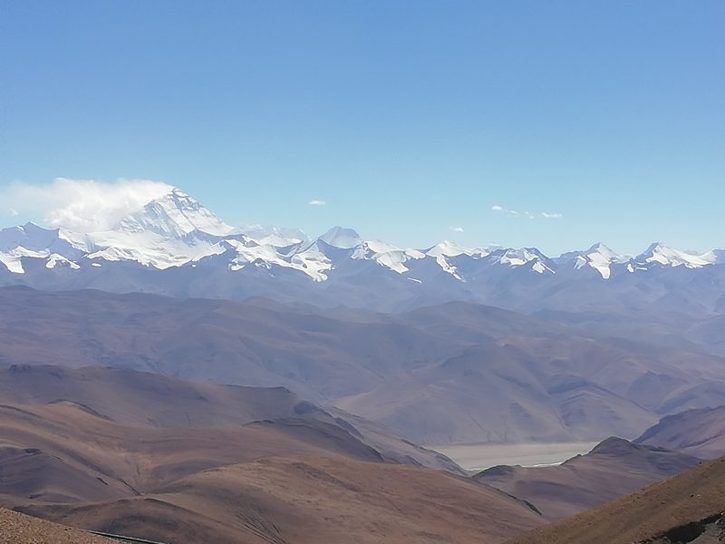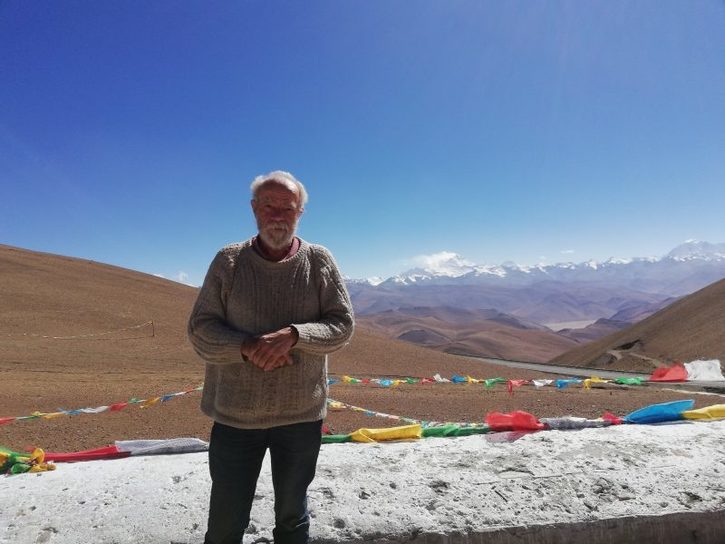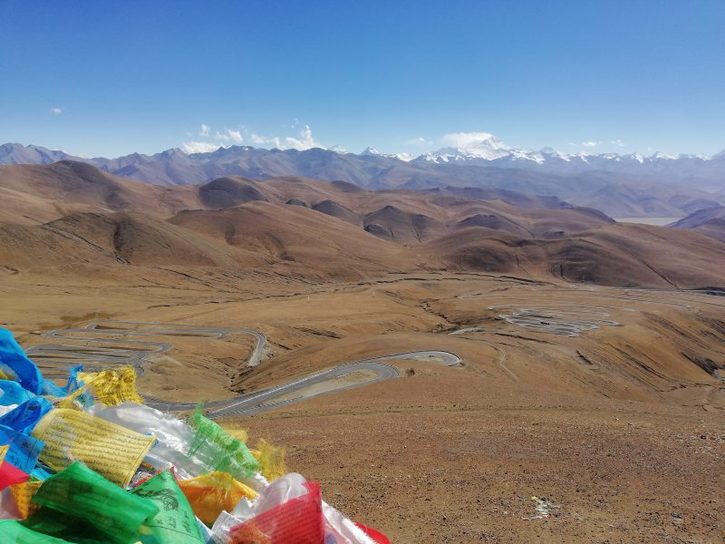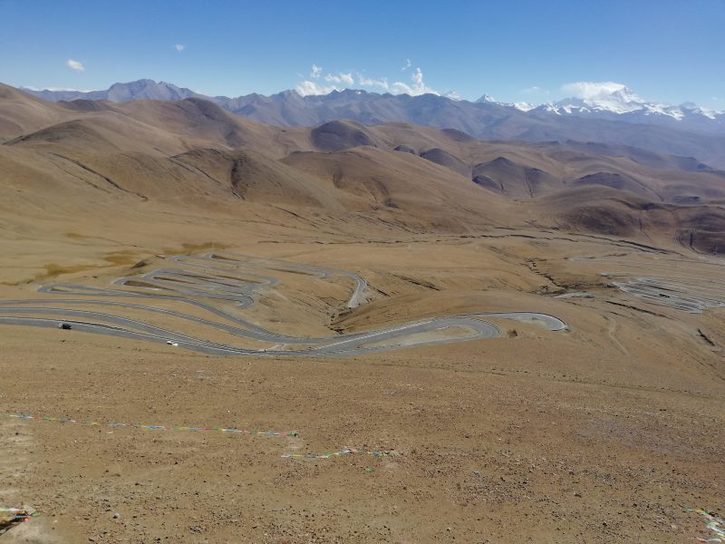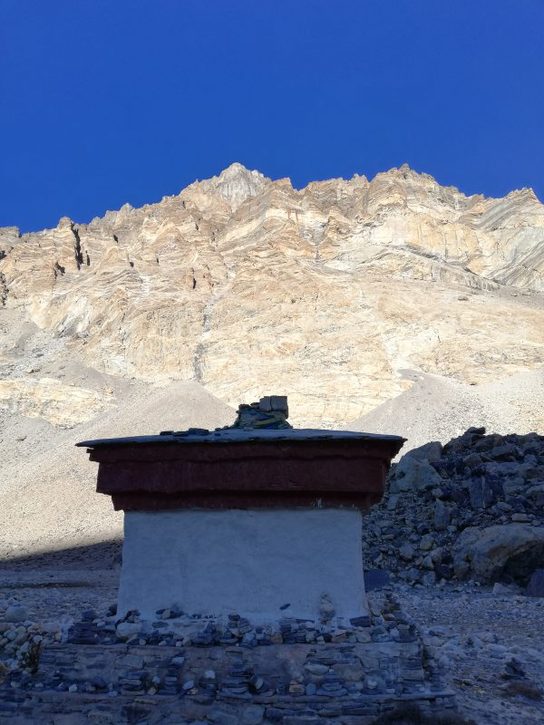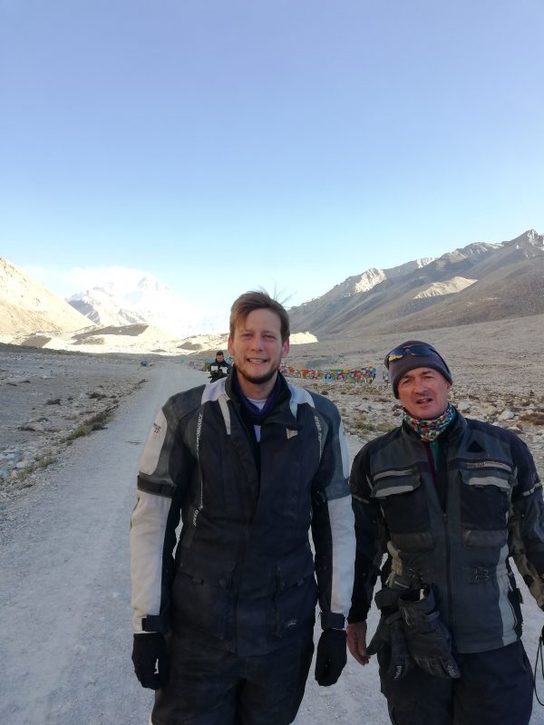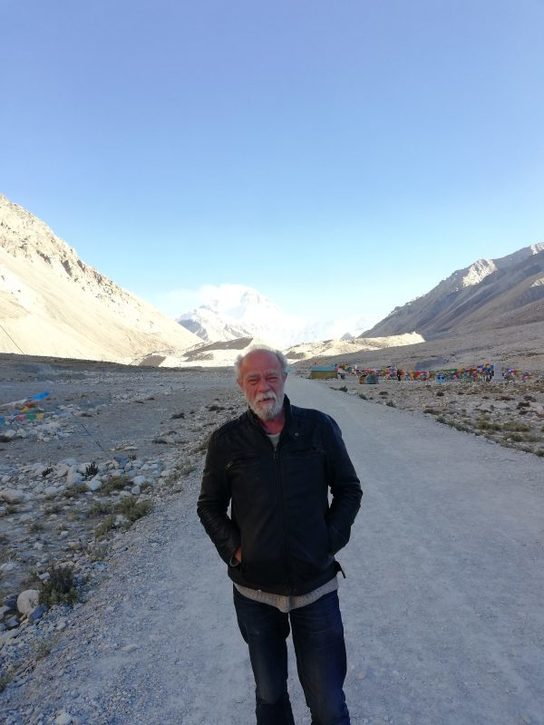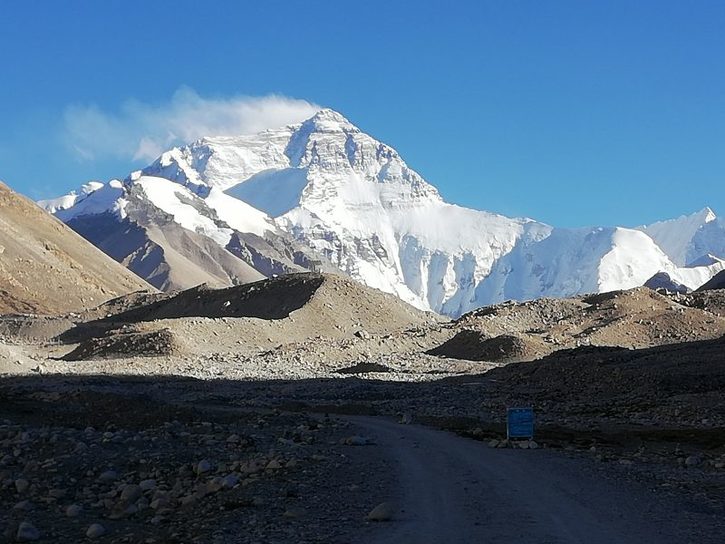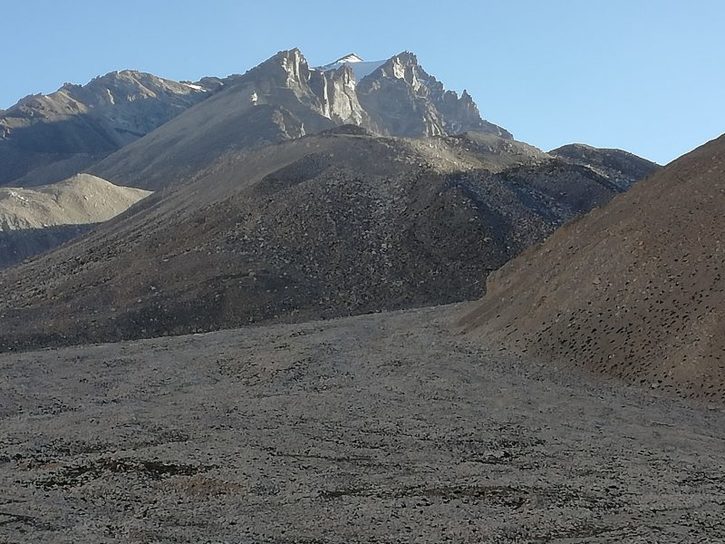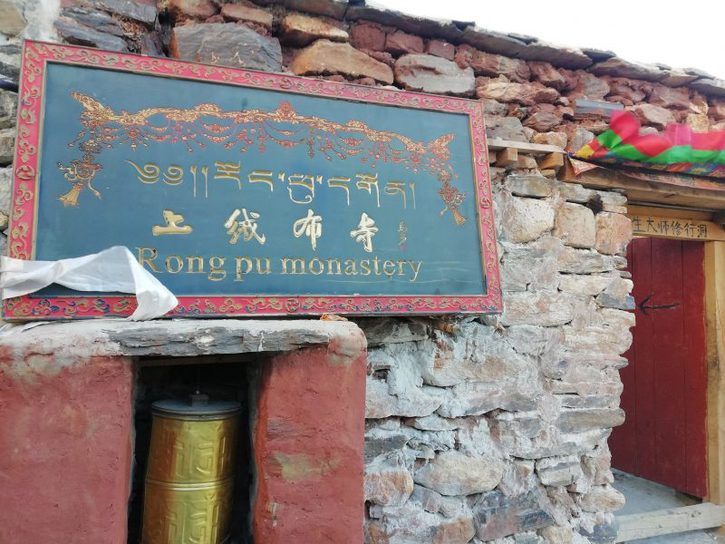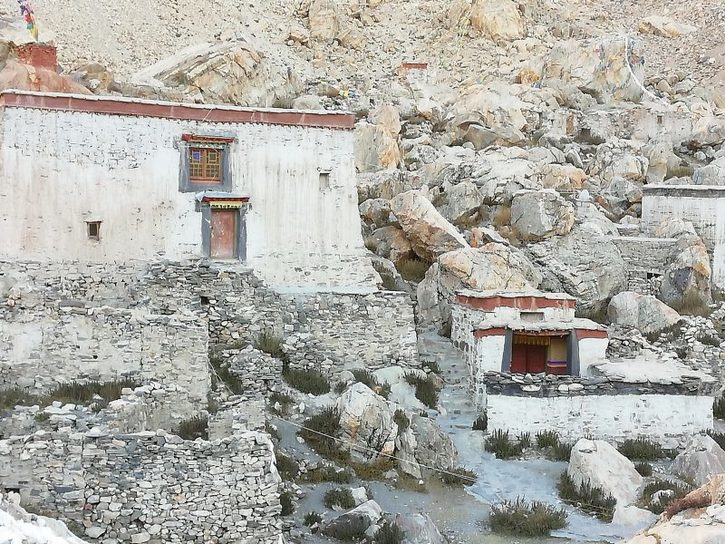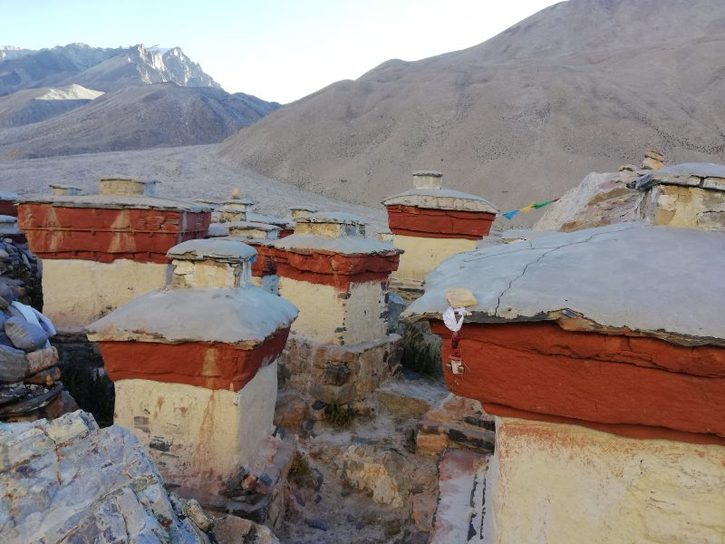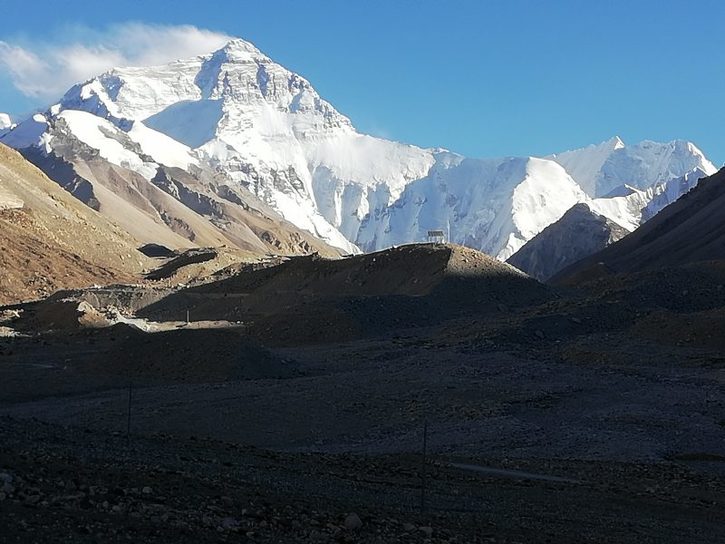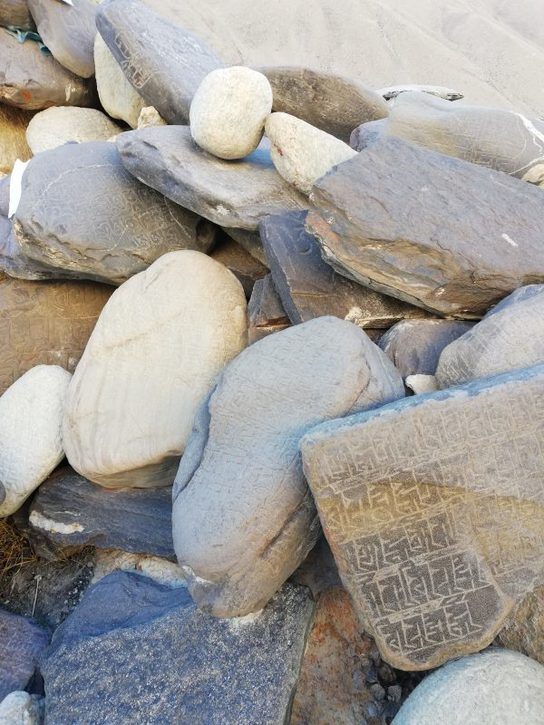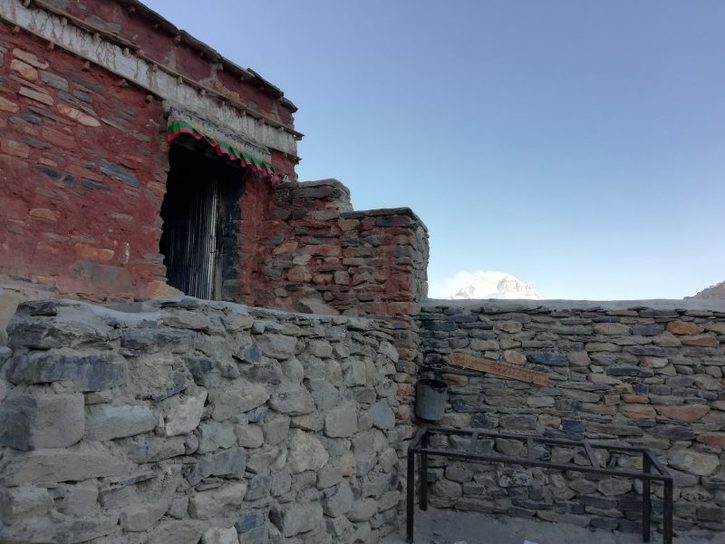We continued along the G318 to the rapidly-growing town of Lhatse and then to Old Tingri, which the Chinese have renamed Piebar. This is the gateway to Everest with a visitor centre a few miles to the west where we had to pay 760 yuan for the car and two passengers. We picked up a Chinese hitchhiker from Guandong Province. We cooked the momos from Tensing’s Dad’s restaurant at the little village of Qie and I took pics of the people threshing the barley. We then drove up the most incredible pass yet with 56 hairpins going up to a viewing point at the top. This is where Michael Palin took the photo of Everest in his book on the Himalayas showing many of the 62 hairpins going down.
There were about seven hamlets at the bottom of the pass with farmers bringing in the barley crop and the roads choked with herds of sheep, goats, cows and yaks. A further 12 miles brought us to Everest Base Camp about 10 miles from Everest with 26 tents for climbers and tourists to stay. The height is about 5,300 metres. The lady at No.24 registered us if we ate a meal and we had a soup made of noodles, yak meat and cabbage. “Number 24” translates as “I want to die” in Chinese so she doesn’t get much custom and all the Tibetan tour guides take people there to help her. Four years ago, our car stopped at Base Camp and a bus took us to a hill about 8 miles from Everest, but the rules have changed and we can only walk for about 1 km. We did that to admire the mountain and returned to the van to go to bed.
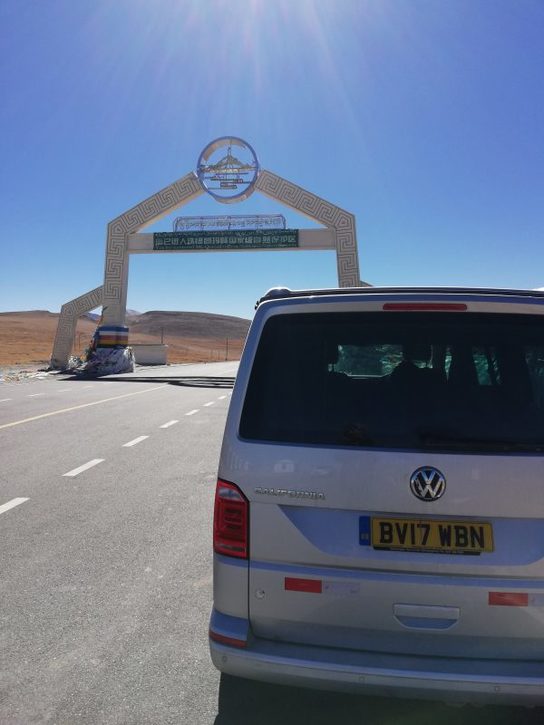
[caption id="attachment_2552" align="alignleft" width="800"]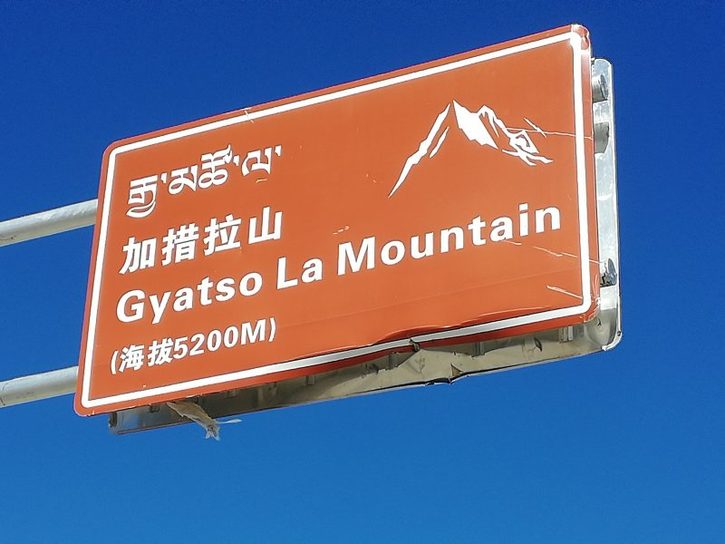 Gyatso La Pass, 5,165 metres
Gyatso La Pass, 5,165 metres
